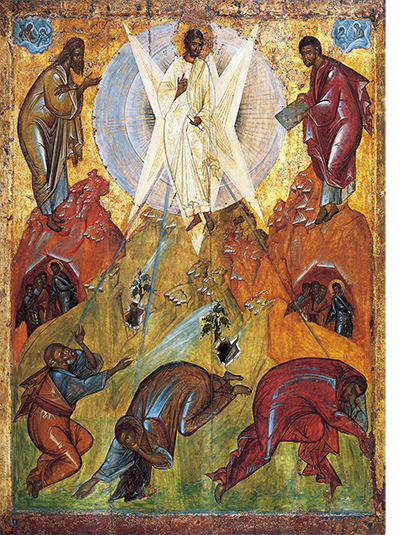.jpg)
By Rev. Canon Val Kenyon
As we enter this month of February, we continue in the season of Epiphany, the season of light. However, in the space of a few weeks, we will find ourselves at the transition point between Epiphany and Lent, the point we know as Transfiguration Sunday.
The word Transfiguration – in which two words and so two ideas come together – (trans – meaning across or through) and figuration (appearance/form) – together explode into the idea of a form or an appearance changing, however not in some small, insignificant way, but rather changing completely which, we known, is what we see in the Gospel reading of the day with Jesus and his disciples atop the mountain.
We understand this process to some degree, as we also have examples of what we might call transfiguration (though no doubt in scientific theory other terms might be more precise, more correct) in the natural world – seeds that change into plants, caterpillars that change into butterflies, and tadpoles that become frogs. And while it may feel far away at this point, with time the barren trees of winter, so lovely and delicate in their own right, will change as spring awakens them.
Epiphany began with a great burst of light, and coming full circle that is exactly how it will end, with the blazing, blinding, brilliant light atop a mountain. However, very shortly, Jesus will descend to the desert, and we into the purple season, the season of reflection.
 In this quieter season of Lent, each day brings us closer and closer to the central point of our faith (the great light of Easter Sunday), but first we will pass through another time, a time of great darkness, in the death and resurrection of Christ, the central truth around which our entire year and our entire faith life swirls.
In this quieter season of Lent, each day brings us closer and closer to the central point of our faith (the great light of Easter Sunday), but first we will pass through another time, a time of great darkness, in the death and resurrection of Christ, the central truth around which our entire year and our entire faith life swirls.
In this mountain top experience, Jesus will have to scoop up as much of the light of that season, of those moments when the light was shining at its most brilliant, and hold the wonder and the marvel of them in the darker times, the times when his resolve would be tested, when doubt would dance before him, waiting for him to bite. And having scooped up this light, he would store it in his heart, returning to it as needed, and in returning to it, he would be sustained and supported through the challenges that lay ahead.
These seasons invite us all to remember that whether we find ourselves basking in the light of a great star, or searching for the light that seems hidden in the moment, the brilliance and brightness of Christ found in the transfiguration moment still shines and are alive in each of us.
As we take this step into the next season of Lent, a time of making space in our lives for deeper reflection and examination, we know that God continues to work in our lives, taking us, as the Spirit took Christ, to those places that need some light shone upon them to both equip us for all to which we have been called, and to remind us that whether in brilliance or shadow, we never are beyond the love of our God, the redeeming of Christ, or the guidance of Spirit.
At the heart of becoming a disciple of Jesus lies the process of transformation, a process that is nurtured and supported through the EfM sessions.
If you would like to learn more about all that is available to you at Education for Ministry, please reach out at any time to either Libi Clifford, the Diocese of Huron EfM Coordinator or myself Val Kenyon, Huron’s EfM Animator at valeriekenyon@diohuron.org as we would be pleased to hear from you.
Rev. Dr. Canon Val Kenyon is EFM Animator in Huron.
Illustration: Teophanes the Greek, Transfiguration of Our Lord (Tretyakov Gallery, Moscow)